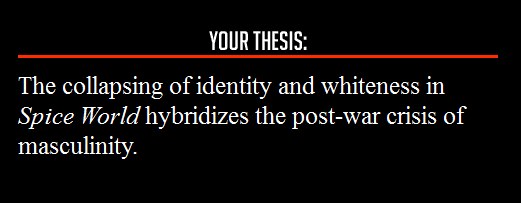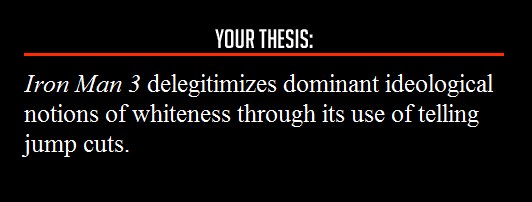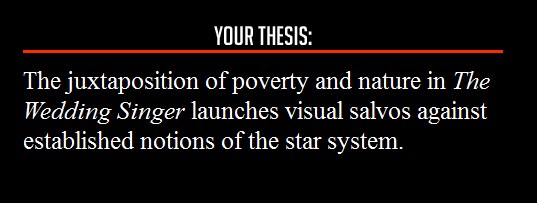
GWS Video: Laurel Gilbert’s “Cave-In” On the Couch
Laurel Gilbert, Michael Kardos, Ohio State, Star Wars, T.C. Boyle

Laurel Gilbert, Michael Kardos, Ohio State, Star Wars, T.C. Boyle

2014, Best American 2012, GWS Video, Kate Walbert, Mike Meginnis, Roxane Gay, Steven Millhauser, T.C. Boyle

Title of Work and its Form: Wild Child, short story collection
Author: T.C. Boyle
Date of Work: 2010
Where the Work Can Be Found: Wild Child is available from fine independent booksellers everywhere.
Bonuses: Here is an interview Mr. Boyle gave to The Paris Review. Here is an interview Mr. Boyle gave to The Rumpus on the occasion of the publication of the second collection of Mr. Boyle’s short story collections. Want to see Mr. Boyle talk about his fantastic book, The Tortilla Curtain? Here:
Element of Craft We’re Stealing: EVERYTHING
Discussion:
I don’t know if you agree, but naming a favorite seems a fool’s errand. No matter how much you love egg salad, there are days when you’ll prefer a McRib. I also feel a sense of loyalty that prevents me from naming “favorites.” Do I have a favorite baseball team? Sure; I love my Detroit Tigers. I recognize that this affection is a slight to all of the other teams. Sorry, Seattle Mariners. You’re just not as special to me as the Motor City Kitties.
This is the thought process that prevents me from calling Mr. Boyle my favorite contemporary writer. There are many storytellers equally close to my heart-some of whom I know personally-who are so good that my conscience won’t allow me to slight any of them. That said, Mr. Boyle is certainly one of the writers to whom I look most for inspiration, instruction in craft and just plain fun.
I’ve never done a GWS essay like this one before; instead of putting a primary focus on Wild Child, I am going to focus a little more on what we can learn from Mr. Boyle himself. I’ll use Wild Child as a lens through which we can consider Mr. Boyle’s work. Otherwise, we would have thousands of pages to read together. (Not that such a homework assignment would be a terrible thing.)
Wild Child collects the stories Mr. Boyle published in the years subsequent to Tooth and Claw, his seventh collection. Here’s a handy table of contents:
| Story Title | Originally published in… | POV |
| Balto | The Paris Review/Best American Short Stories 2007 | 3rd |
| La Conchita | The New Yorker | 1st |
| Question 62 | Harper’s | 3rd |
| Sin Dolor | The New Yorker | 1st |
| Bulletproof | Best Life | 1st |
| Hands On | The Kenyon Review | 3rd |
| The Lie | The New Yorker | 1st |
| The Unlucky Mother of Aquiles Maldonado | Playboy | 3rd |
| Admiral | Harper’s/Best American Short Stories 2008 | 3rd |
| Ash Monday | The New Yorker | 3rd |
| Thirteen Hundred Rats | The New Yorker | 1st |
| Anacapa | A Public Space | 3rd |
| Three Quarters of the Way to Hell | Playboy | 3rd |
| Wild Child | McSweeney’s | 3rd |
The first thing that you’ll notice after reading a bunch of Mr. Boyle’s work is that he has boundless imagination. Look at the range of these characters and these situations! As you work through the book, you read about a young woman dealing with the actions of an alcoholic father, a man caught in a mudslide, a doctor who lives in Mexico, a Venezuelan ballplayer who struck it rich in America and celebrated by buying his mother a machine shop, a chipper man whose suburbia temporarily turned dreary after his neighbor’s wife died and a feral child in eighteenth-century France.
Isn’t imagination the reason we become writers? Yes, Mr. Boyle works with some of the same overall themes. (He seems to be very interested in the concept of “redemption.”) Sure, Mr. Boyle has some prose tendencies that could allow you to pick his stories out of a police lineup. These are both perfectly natural expressions of the fact that one man is behind all of these incredibly diverse stories. A simple look at Mr. Boyle’s oeuvre, however, makes it clear that he is fascinated by all kinds of characters and wants to play with (and present) all kinds of narratives.
One of the big things that thrills me about literature is when I read the first couple paragraphs of a book or story and I can just tell that the writer has (metaphorically) taken a seat before me and said, “Check it out. You’re not going to believe this awesome story I’m about to tell…” THIS is the kind of attitude that writers should have when they sit down to compose. We all have a moral in mind for our story, but Mr. Boyle never puts his powerful political and social message above his first duty: to tell a ripping yarn.
Now, I’ll never be a millionth of the writer that Mr. Boyle is, but I like to think that I’ve always exhibited a similarly wide-ranging curiosity. Looking over my list of published and unpublished stories, I’ve written:
I’m not tooting my own horn; I have no horn to toot. I suppose I am just encouraging people to prioritize creativity and storytelling over most other concerns. THESE are the kinds of stories that we remember. Like everyone else, I’ve read a zillion short stories. Which ones do I remember? The one about the guy whose friend brought him to the creepy neighbor’s house so they could share the horror and thrill of seeing the basement filled with Nazi memorabilia. The one about the former addict who shared a moment with a rich benefactor whose daughter had died from addiction. The one about the town whose citizens get together each year to stone the loser of the lottery. One of the reasons that I write is to get out of my head and my own experience to some extent. Isn’t it the same for you sometimes?
The curiosity that bleeds from Mr. Boyle’s work also results in a tight focus on the dilemma into which he throws his characters. I have an interesting relationship with “The Love of My Life,” a story Mr. Boyle published in The New Yorker in 2000. Am I the only one who loves Thruway rest areas, particularly at night? No, not for the reasons you might assume. A rest area is one of the few places in which you can be a stranger; you’re surrounded by fellow travelers and workers with whom you will never have a second encounter. I was alone on my way heading from Columbus, Ohio to Oswego and took at table at the Denny’s in the Buffalo Thruway plaza. As a cool person, I’m accustomed to eating alone at restaurants, so I opened up the Boyle collection and started to read the story. Mr. Boyle had my attention from his stunning first sentence:
They wore each other like a pair of socks.
Fortunately for me, I am really good at suppressing my feelings, so I didn’t melt into a puddle of tears while my Lumberjack Slam congealed beside me. I still haven’t re-read the story because the darn thing makes me sad just thinking about it. (See also: the third act of A.I.: Artificial Intelligence.) What’s the point? For one, Mr. Boyle was far removed from his teenage years when he wrote the story, but he was still able to depict the the pain of young love. Mr. Boyle doesn’t allow himself to be defined by any shallow societal taxonomy. Further, Mr. Boyle places interesting characters into meaningful events that have powerful repercussions on the rest of their lives.
One of the many reasons that some people pick up the remote more often than they pick up a book is because TV programs are more likely to give you that, “Oh, crap! No way!” moment. In a sitcom, the protagonist’s lies will result in a third-act explosion of that dissembling. In the last ten minutes of Law & Order, you and the detectives realize the REAL circumstances of the crime. In many short stories…you know…they just kinda end. There’s beautiful language, an epiphany or two, but…that’s about it.
Mr. Boyle’s stories, on the other hand, pack an unforgettable punch. I don’t want to spoil “The Love of My Life,” but I’ll never forget the moments when the male protagonist did the deed and the chill that froze the protagonists’ next few years. I love that Aquiles Maldonado, veteran fireballer for the Orioles, found his way into the climax of the piece and used his talent for the last time in service of his mother. I love that the “Oh, crap! No way!” ending of “Ash Monday” is thematically appropriate and still surprising. I love that the protagonist of “The Lie” told an outrageous fib that snowballed into the undoing of his life as he knew it.
I’m not saying that EVERY story needs to be a pedal-to-the-metal chiller thriller. I guess my point is that Mr. Boyle’s work reminds us that we must consider the audience a partner in our storytelling. If you walk up to a stranger on the street and say, “Hey, wanna take a walk with me for twenty minutes during your lunch break?,” the poor stranger will run away from you. Instead, you must give the reader a reason to change direction. Then you must keep him or her interested long enough to continue the mutual journey. Finally, you must leave the reader with something memorable that will remain with them long after they’ve gone back to work. Mr. Boyle is a master of making the reader his partner. (As are Joyce Carol Oates and Tom Perrotta and Lee K. Abbott and Erin McGraw and Ben Fountain and countless other writers.)
Mr. Boyle’s writing just FEELS GOOD on a deep level because the work is contrived without feeling contrived. Yes, Mr. Boyle-though perhaps working from a germ of reality he read about-is making everything up. So why does his writing manage to feel so real and so right? Even though we have free will, our experiences and circumstances cause others to follow in a natural manner. Mr. Boyle’s stories work the same way:
I guess what I mean to say is that Mr. Boyle’s stories function in small worlds that are complete unto themselves. He is the puppet master behind the machinations of the characters, but you never, ever see the strings. Maybe it’s just me, but it can sometimes be hard for me to take full control of the world in which I’m setting my story. Perhaps I’m too hung up on the person or situation that originally inspired the work. Maybe I hit a roadblock because I feel I need to describe the protagonist’s workplace in excruciating detail. Mr. Boyle’s work is imbued with a beautiful symmetry that makes the “cool parts” seem perfectly organic. One of the characters in Wild Child is a motorcycle messenger whose job it is to deliver live organs from donors to recipients. The choice Mr. Boyle imposed on this character give the man a significant portion of his motivation and also stamp a ticking clock on the narrative. (After all, we all understand that the heart in that cooler is going to die at some point.) We must allow ourselves to think bigger than our initial inspiration and construct our work in such a manner that we exploit the characters and situation to the fullest.
If you’ve read more than a few of the hundreds of little essays on Great Writers Steal, you will know that this is easily one of the longest. Why? I think I’ve taken the time in part because it breaks my heart every time I hear someone say that “literature is boring.” Or that “new stuff” doesn’t capture them. Or that “short stories are hard to read.” Or that “literary journals are boring.” T.C. Boyle’s work is as accessible as it is brilliant. As fun as it is powerful. The gentleman has justifiably built a massive audience for himself, and I believe that writers like him represent our best shot at eliminating the phrase “I’m not a big reader” from our social lexicon.
What Should We Steal?

Friends, I think it’s safe to say that we all have two goals with respect to our writing: to entertain and enlighten. Whether we’re writing Jack & Jill 2: Twin Killing for Adam Sandler or a piece we hope ends up in Best American, stories and poems and screenplays are borne of our greatest hopes and fears. There’s a message inside us that we simply must communicate.
The reader, of course, is free to decide what he or she thinks you are trying to say. Sometimes it can be difficult to figure out the deeper meaning behind the work we enjoy…that’s where the Film School Thesis Statement Generator comes in. Mike Lacher, creator of the hilarious Geocitiesizer, is here to help. Simply pop a film title into the machine and BAM! You have the big claim you’re looking for. See?






This Thesis Statement Generator isn’t just for films! Look what happens when you experiment:
Check out the Film School Thesis Statement Generator for yourself! Why not leave the results in the comments?
GWS Coffee Break, Loving the Bad Man, Ohio State, T.C. Boyle, Tom Perrotta